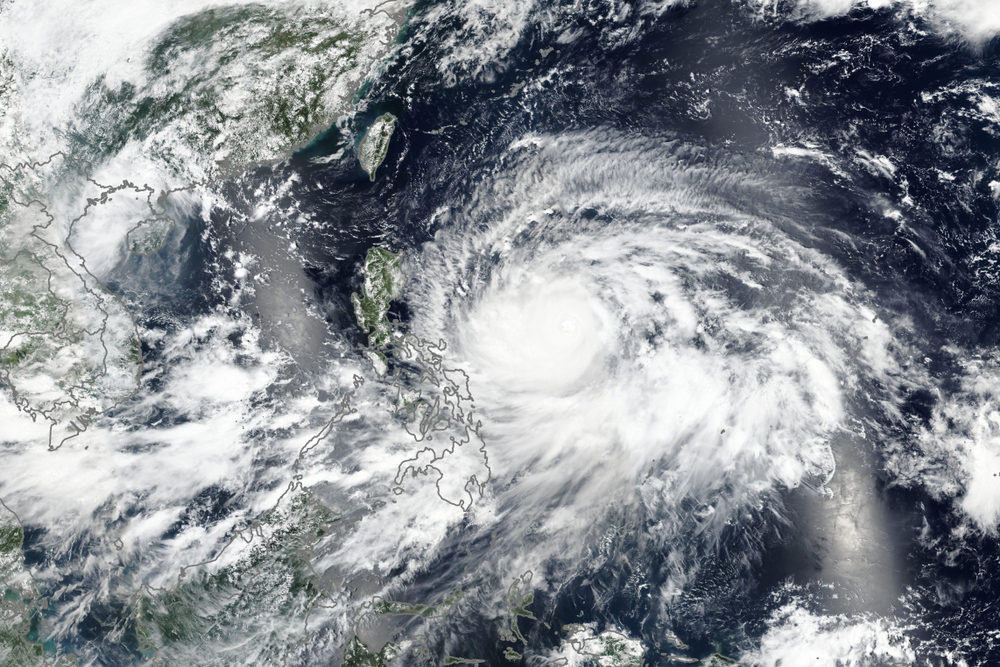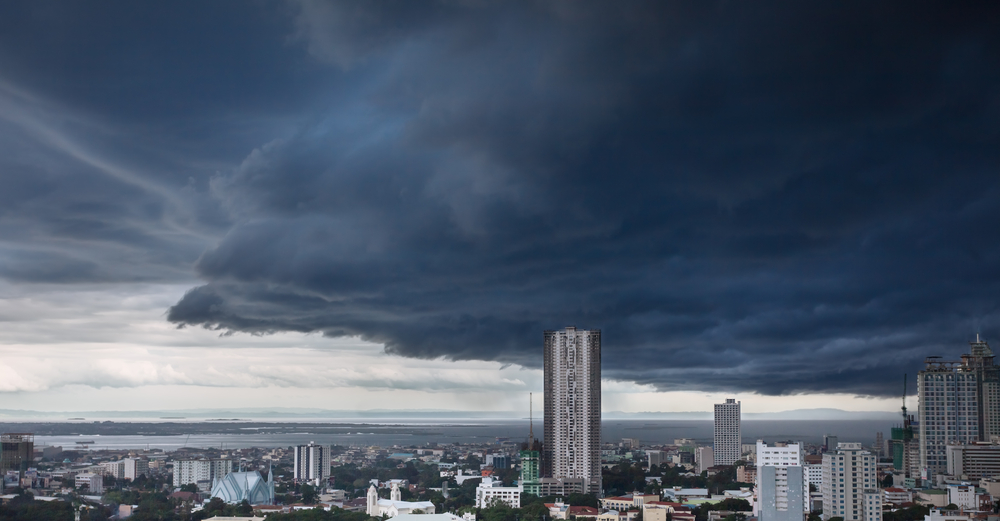Earth, wind, water, and fire: Preparing properties against the next climate disaster
This article is based on Ommid Saberi’s IFC keynote at the PropertyGuru Asia Real Estate Summit originally presented on 8 December 2021.
Amid concerns over intensifying weather events and their toll on property, the IFC calls on the world to act

In 2020, Filipinos locked themselves up at home for fear of the death and devastation raging outside.
No, it was not the fear of catching COVID-19 — which caused enough suffering by itself — but of Typhoon Rolly, caught in a vicious staredown with the Philippines. Unleashing winds at speeds of 315 kilometres per hour, the cyclone left more than PHP20 billion (USD353 million) worth of damage in its trail.
A few weeks later, Ulysses arrived. The typhoon pelted the archipelago with up to 305mm of rainfall, filling Luzon Island’s dams to the brim and causing widespread flooding in Metro Manila.
At this point, the International Finance Corporation (IFC) has had enough. By the end of that year, the global development institution chose the Philippines as the pilot country for one of its latest innovations: the Building Resilience Index.
As it stands, the web-based hazard mapping and resilience assessment framework is a fitting choice for the Philippine property sector. The Building Resilience Index maps out hazard information specific to a location and proposes measures for building owners to mitigate the risks therein.
Set in a firing gallery of typhoon belts, as well as the Pacific Ring of Fire, the Philippines is one of the most vulnerable countries to natural disasters. The country recorded the fourth-highest number of natural disasters globally over the last 20 years.
“Some of the worst natural hazards on record have added fresh impetus for calls to accelerate efforts to transition to a greener, resilient, and more inclusive Philippines,” says Jean-Marc Arbogast, country manager for the Philippines at IFC, in a statement.
A system of transparency
A complement to IFC’s EDGE certification programme, the Building Resilience Index offers a system of transparency in markets where it is sorely lacking. It discloses information on a building’s ability to withstand shock and function thereafter, letting everyone from governments to lenders know how and when to act in anticipation of catastrophe.
A building is graded R to A+ on the index, the former being the least resilient and the latter having contingencies long after a location is cut off from power and necessities. The levels of the Building Resilience Index are as follows:
A+ – ‘A+’ is equal to an ‘A’ with operational continuity measures. The building meets all level ‘A’ requirements, plus three or more measures of operational continuity.
A – The building incorporates global best practice mitigation measures for all applicable individual hazards, which are generally set above the local building code. It will likely survive all applicable hazards at a high level.
B – The building incorporates local latest building code requirements for all applicable hazards and many recommended good practices. It will likely survive some applicable hazards at a moderate-high level.
C – The building incorporates local building code requirements, some of which may be outdated, and some recommended practices. It may survive some applicable hazards at a moderate level.
R – The building fails to meet the requirements of any of the above levels. It will likely not survive most applicable hazards, even at a moderate level.
More: People, planet, and partnerships: A framework on sustainable living in Asian megacities
Uninsured, unreported
Natural disasters have impacted 4.3 billion people and constituted USD3 trillion in economic losses worldwide over the last two decades. “The interesting fact there is that when you look at many of the emerging markets, the assets are not insured,” says Ommid Saberi, the global lead for the Building Resilience Index programme and global technical lead for the EDGE programme. “The insurance condition is not like in developed countries. Many assets are not insured; therefore, the losses are not really fully reported.”
IFC, a member of the World Bank Group, offers the Building Resilience Index as a way for insurance companies and banks to review projects before underwriting. Financial institutions are able see the cost of mitigating a project: saving time and resources on evaluation processes. The Bank of the Philippine Islands, for instance, uses the index to make key investment decisions.
Donors and development agencies can also use the index as a tool for financing retrofits or improvements to an existing building. Property developers, on the other hand, can use the tool to differentiate their brands as builders of resilient structures.
“The building developer can print this and take it to the bank or the insurance company and say, ‘Look, my building has this specific verified rating. My building has this level of resilience in its design or construction,’” explains Saberi.

Of building codes and mitigation measures
The international community needs to act post-haste as countries like the Philippines bear the brunt of extreme weather events attendant on climate change — a legacy of oft richer, carbon-emitting countries. Funded by the governments of the Netherlands and Australia, as well as the Rockefeller Foundation, the index encourages authorities to enshrine incentives for resilient buildings into local policies.
The IFC also invites public organisations with access to risk maps to share data, with an eye towards crowdsourcing machine learning capabilities into the index. Reading data from different sources, the index can tailor even better solutions to a location.
“Imagine one day when we would have a rating for every single building in a town, in a city,” says Saberi. “This can provide opportunities for improvements to buildings that have lower ratings. We can create jobs. We can provide support for retrofitting these buildings.”
Saberi, an architect by profession who has collaborated with many structural and civil engineers, knows well how natural hazards become blind spots during the design process. While important, the building codes that so many architects and engineers follow are not failproof preventives against disasters.
“The codes are designed to minimise the cost of construction to protect human life,” says Saberi. “However, the codes are not designed to protect the asset. What it means is that these codes are only doing the bare minimum to keep the people [safe]. Thus, your building may not be protected. Your building may be damaged to the extent that the whole structure is at loss.”
Identifying the risk is the first step towards making a building resilient. Accessible to the public, the index provides design teams with a list of mitigation measures relevant to various kinds of hazards. These measures guide stakeholders on how to best plan and design structures under previously identified conditions. The engineer then assesses if the built space meets the requirements, leading to a rating.
More: A future like Wakanda: Why big cities should embrace and build on their past
Not a cost
What if we just demolish a building and build a new one?
To that, climate activist Greta Thunberg would probably say a curt: “How dare you?”
Building anew adds to more embodied carbon in the atmosphere. Embodied carbon, which comes from the manufacture, use, and disposal of construction materials, accounts for 10% of a building’s lifetime operational emissions. Therefore, the best, most sustainable buildings are the ones that already exist.
For every USD1 spent on building resilience, the owner saves USD6 in repair costs, according to Saberi, citing a study from the National Institute of Building Sciences. “Resilience is not a cost. It’s an investment,” he says.
Such investments take centre stage in a world likely to cross what climate scientists are calling the ‘point of no return.’ Developing nations such as the Philippines can be assured of more destructive weather events in the meantime. The oceans and the provenance of cyclones will continue absorbing heat trapped by greenhouse gases, creating the next powerful storm.
The planet simply cannot brook the construction of weak edifices. “If you look at this situation, you realise that we have a lot of exposure around the world,” says Saberi. “But what is happening here is that we are basically building time bombs. And these time bombs are going to go off at some point.”
This article was originally published on ARES White Paper Volume 2. For more information, visit AsiaRealEstateSummit.com or email [email protected].
Recommended
Meet the expert helping overseas investors crack Australia’s property market
Ivan Lam of property advisors Charter Keck Cramer helps clients navigate Australia’s complex real estate dynamics
ARES White Paper Volume 3: The era of adaptive reinvention
Pioneering sustainable and innovative practices in urban development
ARES White Paper Volume 2: Unravelling the power of data revolution in real estate
Insights on proptech, smart cities, and sustainable development
ARES Digital White Paper Volume 1: The fundamentals of responsible building
Green and climate heroes join forces to discuss how Asia Pacific can weather the current environmental crises and the looming effects of climate change







